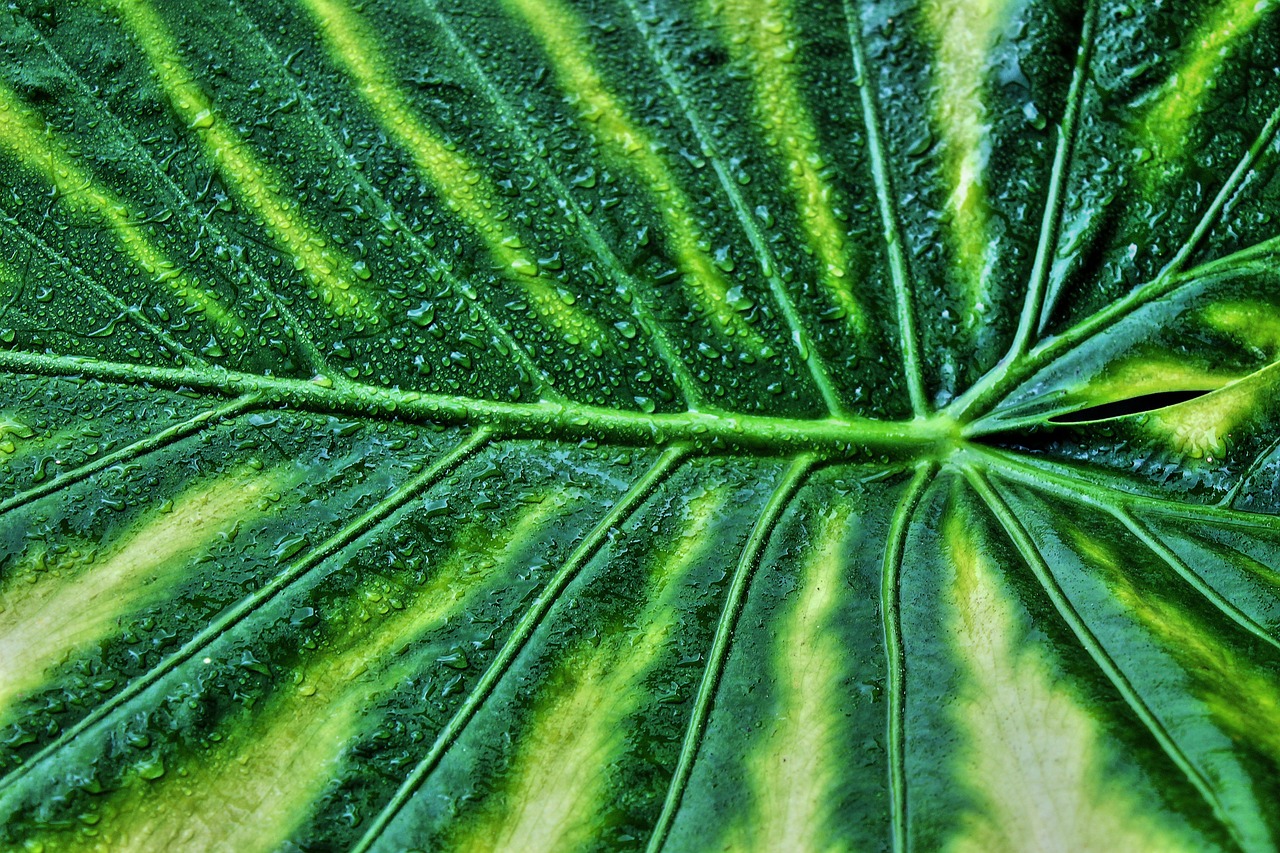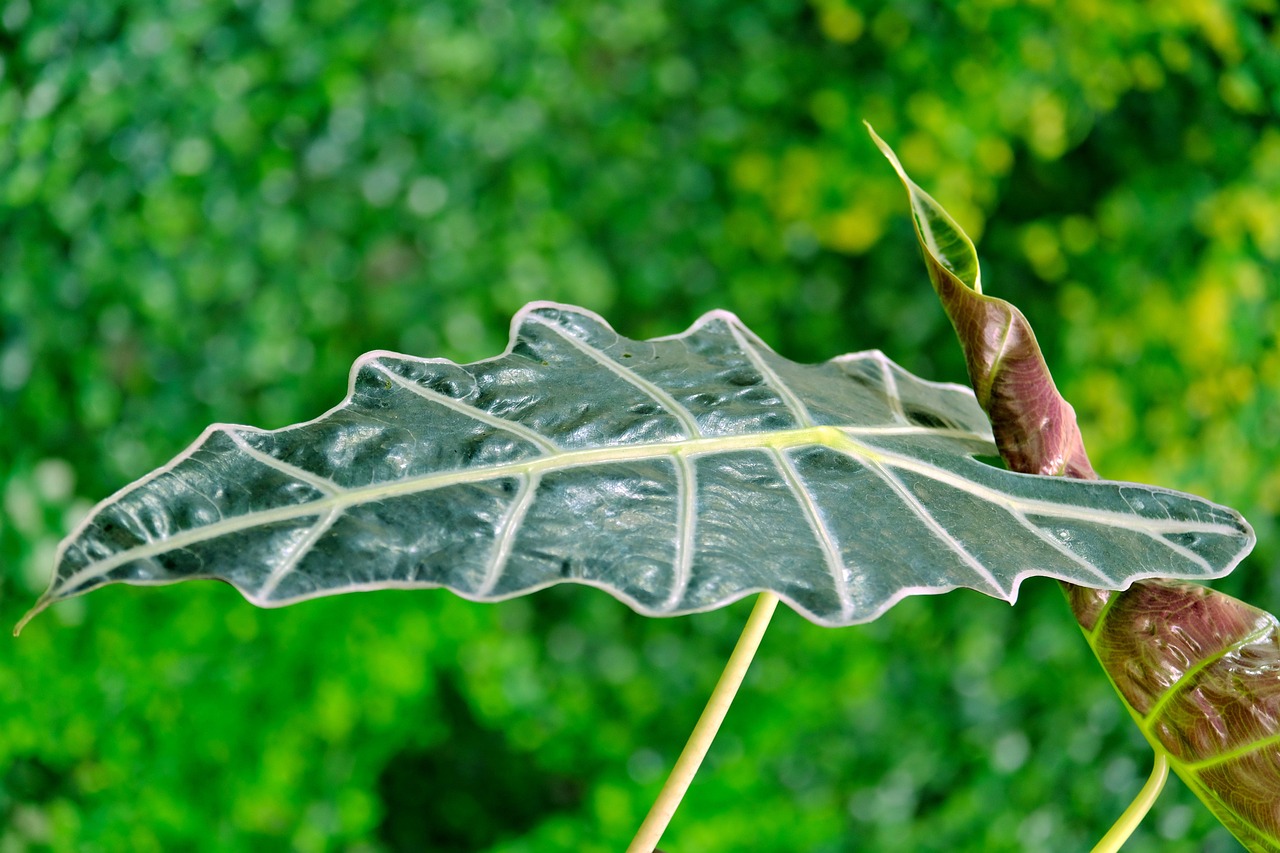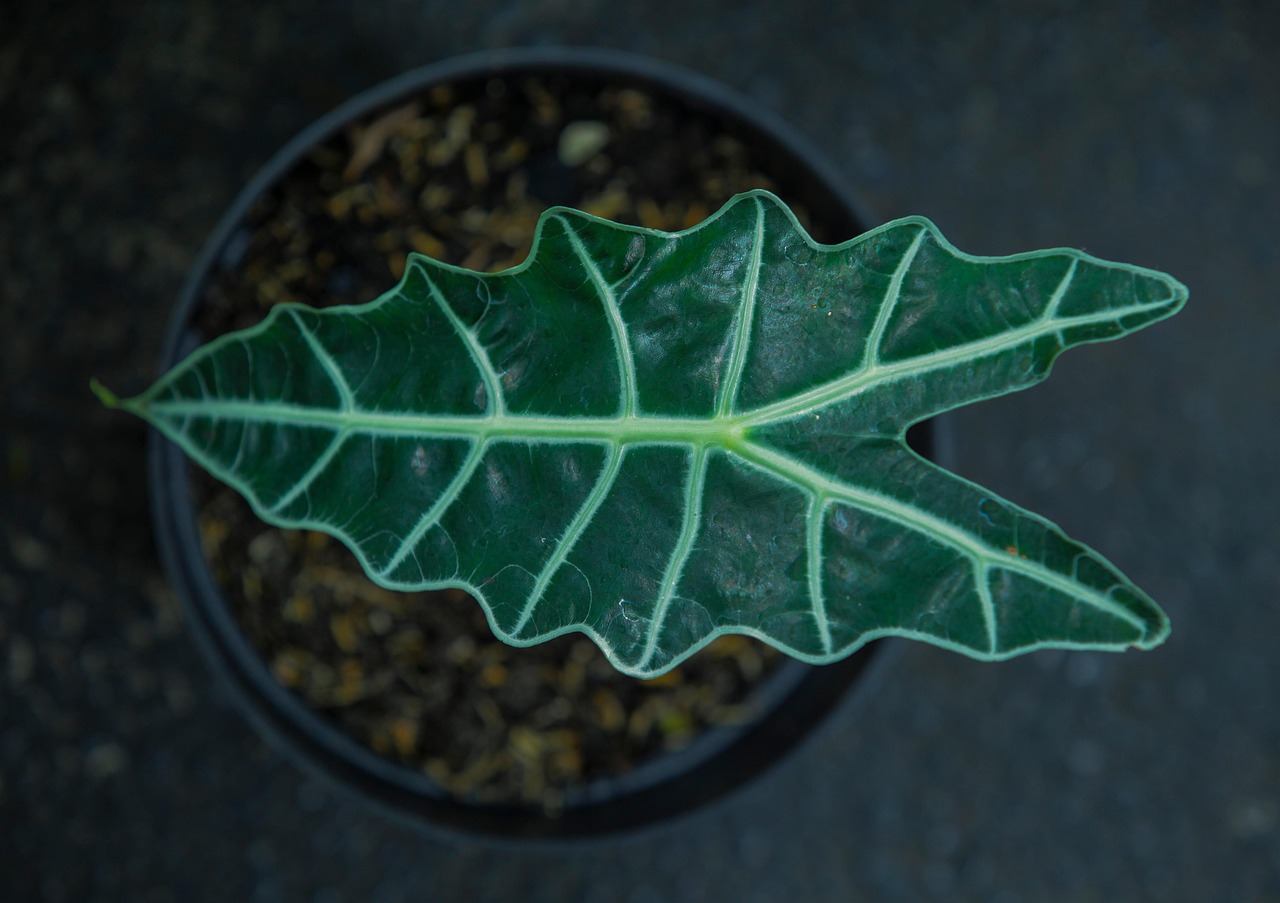Alocasia Albo propagation requires careful attention to its specific needs. To successfully propagate this plant, ensure you use healthy offsets or bulbs, maintain high humidity, and provide indirect light. Proper watering and soil conditions are also crucial for promoting robust growth.
The Alocasia Albo, known for its stunning variegated leaves, has captivated plant enthusiasts around the globe. This tropical plant thrives in warm, humid environments, making it a popular choice for indoor gardening. However, propagating the Alocasia Albo can be a bit challenging due to its unique care requirements. Understanding how to propagate and care for this plant is essential for any enthusiast looking to expand their collection.
Propagation typically involves separating offsets or bulbs from the mother plant. These offsets, or pups, are smaller plants that grow alongside the main plant. They can be removed and planted separately to create new plants. The process is relatively straightforward, but it requires careful handling to avoid damage.
Before diving into the propagation process, it is essential to understand the ideal growing conditions for Alocasia Albo. Here are some key factors to consider:
| Factor | Ideal Conditions |
|---|---|
| Light | Bright, indirect sunlight |
| Humidity | 60% or higher |
| Temperature | 65°F to 80°F (18°C to 27°C) |
| Soil | Well-draining potting mix |
| Watering | Keep soil moist but not soggy |
Once you have set up an appropriate environment, you can begin the propagation process. Begin by carefully removing the mother plant from its pot. Gently shake off excess soil to expose the roots. Look for offsets that are at least a few inches tall and have developed their own roots.
Using a clean, sharp knife or scissors, separate the offsets from the main plant. It is crucial to make clean cuts to avoid damaging the parent plant or the offsets. After separating them, allow the cut ends to dry for a few hours. This step helps prevent rot when they are potted up.
Prepare pots with a well-draining potting mix suitable for Alocasia plants. When planting the offsets, ensure that their roots are covered but not too deep in the soil. Water them lightly after planting, ensuring that the soil is moist but not waterlogged. This initial watering encourages root establishment.
To promote healthy growth during the early stages of propagation, place the newly potted offsets in a warm area with high humidity. A humidity dome or a clear plastic bag can help maintain humidity levels. Monitor them closely and provide indirect light to prevent leaf burn.
As the new plants begin to establish themselves, gradually reduce humidity and adjust light exposure. This process helps them acclimate to normal growing conditions. Over time, you will notice new growth as your Alocasia Albo thrives in its new home.
Essential Care Tips for Alocasia Albo

>After propagating your Alocasia Albo, providing the right care is crucial for its health and growth. Understanding the specific needs of this plant ensures that it thrives and remains vibrant. Here are essential care tips to keep in mind.
Watering Practices
Proper watering is one of the most significant factors in the health of your Alocasia Albo. Here are some tips to consider:
- Moisture Levels: Keep the soil consistently moist but not soggy. Overwatering can lead to root rot, while underwatering can stress the plant.
- Watering Schedule: Water when the top inch of soil feels dry. This usually means watering every 1-2 weeks, but it can vary based on humidity and temperature.
- Water Quality: Use distilled or rainwater, if possible. Tap water may contain chemicals that can harm sensitive plants.
Lighting Conditions
Light plays a vital role in the growth of Alocasia Albo. Here are some guidelines for optimal lighting:
- Indirect Light: Place your plant in bright, indirect sunlight. Direct sunlight can scorch the leaves.
- Adjusting Light Exposure: If you notice your plant’s leaves turning yellow, it may be receiving too much light. Conversely, if the leaves lose their vibrant coloring, it may need more light.
- Seasonal Changes: Be mindful of seasonal changes, as light intensity can vary. Adjust the plant’s location accordingly during different times of the year.
Humidity Requirements
Alocasia Albo thrives in high humidity environments. Here’s how to ensure adequate humidity levels:
- Maintaining Humidity: Aim for humidity levels of 60% or higher. You can achieve this by using a humidifier or placing a tray of water near the plant.
- Misting: Lightly misting the leaves can help increase humidity, but avoid overdoing it as excessive moisture on leaves can lead to fungal issues.
- Grouping Plants: Consider grouping your Alocasia with other humidity-loving plants to create a microenvironment with higher humidity.
Temperature Preferences
The ideal temperature range for Alocasia Albo is between 65°F to 80°F (18°C to 27°C). Here are some tips to maintain the right temperature:
- Avoid Cold Drafts: Keep your plant away from cold drafts, air conditioning vents, and heaters, as sudden temperature changes can stress the plant.
- Monitoring Temperature: Use a thermometer to monitor room temperature, especially during colder months.
Pest Management
Pests can pose a significant threat to the health of your Alocasia Albo. Recognizing and managing these issues early is crucial. Common pests include spider mites, aphids, and mealybugs. Here are some tips for pest control:
- Regular Inspections: Frequently check the undersides of leaves and stems for signs of pests.
- Pest Treatment: If you notice any pests, treat them with insecticidal soap or neem oil. Always follow the manufacturer’s instructions for safe application.
- Preventive Measures: Keeping your plant healthy and well-cared-for can help prevent pest infestations.
Nutrient Supply
Nourishing your Alocasia Albo with proper nutrients is vital for its growth. Here’s how to ensure your plant receives adequate nutrition:
- Fertilizing Schedule: Fertilize every 4-6 weeks during the growing season (spring and summer) using a balanced liquid fertilizer.
- Reducing Fertilizer in Dormancy: Cut back on fertilization during fall and winter when the plant is not actively growing.
- Signs of Nutrient Deficiency: Yellowing leaves or stunted growth may indicate a need for additional nutrients.
Caring for your Alocasia Albo requires attention to detail and a commitment to meeting its unique needs. By following these care tips, you will provide a nurturing environment that promotes healthy growth and vibrant foliage.
Common Issues and Solutions
Despite your best care efforts, Alocasia Albo may encounter various issues during its growth. Recognizing and addressing these problems promptly can help maintain the health of your plant. Here are some common issues and their solutions.
Leaf Yellowing
Yellowing leaves can be a distressing sign for any plant owner. This condition can arise from several factors:

Alocasia, Leaves, Plant, Flora, Nature, Closeup, Alocasia, Alocasia, Alocasia, Alocasia, Alocasia, Leaves, Nature rong>Overwatering: One of the most common reasons for yellow leaves is overwatering. Ensure that the soil is well-draining and allow the top inch to dry out before watering again.
- Underwatering: Conversely, underwatering can also lead to yellow leaves. Check the soil moisture regularly and adjust your watering schedule accordingly.
- Nutrient Deficiency: As mentioned earlier, a lack of essential nutrients can cause yellowing. In this case, consider applying a balanced fertilizer to provide necessary nutrients.
Brown Tips or Edges
Browning tips or edges on the leaves is a sign of stress in your Alocasia Albo. Here are potential causes:
- Low Humidity: Alocasia plants thrive in high humidity. If your home is too dry, consider using a humidifier or misting the leaves regularly.
- Water Quality: Using hard water or water with high chlorine levels can lead to browning. Using distilled or rainwater can improve leaf health.
- Temperature Extremes: Ensure that your plant is not exposed to cold drafts or extreme heat, which can cause leaf tips to brown.
Pest Infestations
Pests can wreak havoc on your Alocasia Albo if not managed promptly. Here are steps to control common pests:
- Identification: Regularly check for signs of pests such as sticky residue, webbing, or visible insects on the plant.
- Treatment: Use insecticidal soap or neem oil to treat infestations. Apply it according to the product instructions, focusing on the affected areas.
- Prevention: To prevent pests, maintain good air circulation around your plant and avoid overcrowding with other plants.
Repotting Your Alocasia Albo
Repotting is an essential part of caring for your Alocasia Albo. As the plant grows, it may outgrow its current pot, requiring a larger space for continued development. Here’s how to repot effectively:
When to Repot
The best time to repot your Alocasia Albo is during the spring or early summer when it is in its active growth phase. Signs that it’s time to repot include:
- Root Bound: If roots are growing out of the drainage holes or circling the pot, it’s time for a larger container.
- Stunted Growth: If the plant has stopped growing despite proper care, it may need more space.
- Soil Degradation: If the soil appears compacted or has broken down significantly, repotting can refresh its environment.
Steps for Repotting
- Select a New Pot: Choose a pot that is one size larger than the current one with adequate drainage holes.
- Prepare Fresh Soil: Use fresh, well-draining potting mix suitable for tropical plants.
- Remove the Plant: Gently remove the plant from its current pot. Be careful not to damage the roots.
- Inspect Roots: Check for any signs of rot or damage. Trim off any unhealthy roots using clean scissors.
- Replant: Place the plant in the new pot and fill it with fresh soil. Ensure that the top of the root ball is level with the soil surface.
- Water Thoroughly: After repotting, water the plant thoroughly to help settle the soil around the roots.
Post-Repotting Care
After repotting, provide special attention to your Alocasia Albo:
- Avoid Direct Sunlight: Place the plant in indirect light for a few weeks to reduce stress.
- Monitor Moisture Levels: The plant may require more frequent watering initially as it adjusts to its new environment.
- Be Patient: Allow time for your Alocasia Albo to acclimate to its new home before expecting new growth.
Understanding these common issues and how to address them will help you maintain a thriving Alocasia Albo, ensuring that it continues to grow beautifully in your collection.
Advanced Propagation Techniques
For those looking to master Alocasia Albo propagation, there are advanced techniques that can yield impressive results. These methods require more precision and care but can enhance your success rate significantly.
Division Method
The division method is a popular choice for propagating Alocasia Albo when the plant has developed multiple offsets. This technique involves separating these offsets into individual plants, allowing them to grow independently. Here’s how to do it effectively:
- Choose the Right Time: The best time for division is during the active growing season—typically in spring or early summer.
- Prepare the Tools: Ensure you have clean, sharp tools ready for making cuts. This helps prevent infection.
- Remove the Plant: Gently take the plant out of its pot, as described previously.
- Identify Offsets: Look for offsets that are at least a few inches tall with their own roots.
- Separate Carefully: Use your knife to carefully cut the offsets away from the main plant, ensuring that each offset has some roots attached.
- Replant: Follow the repotting steps to place the new offsets in their own pots with appropriate soil.
Water Propagation
Water propagation is another technique that allows you to observe root development before planting in soil. This method is particularly useful for ensuring healthy root growth. Here’s how to do it:
- Select a Healthy Offset: Choose an offset with visible roots for water propagation.
- Use Clean Water: Place the offset in a container filled with distilled water, ensuring that the roots are submerged while the leaves stay above water.
- Provide Indirect Light: Place the container in a location with bright, indirect sunlight.
- Change Water Regularly: Change the water every few days to prevent algae growth and keep it fresh.
- Transplant Once Rooted: Once you notice substantial root growth (around 2-4 inches), transplant the offset into soil.
Caring for Mature Plants
Once your Alocasia Albo h


as matured after propagation, continued care is crucial for sustaining its health and beauty. Here are some tips for caring for mature plants:
- Regular Pruning: Periodically remove any yellowing or damaged leaves to encourage new growth and improve air circulation.
- Seasonal Adjustments: Be aware of seasonal changes and adjust light exposure and watering frequency accordingly.
- Pest Monitoring: Continue to inspect your plant regularly for pests and treat any infestations promptly.
- Feeding Schedule: Maintain a consistent fertilization schedule during the growing season to provide necessary nutrients.
Final Thoughts
The journey of propagating and caring for your Alocasia Albo can be incredibly rewarding. Understanding its specific needs ensures that you provide the right environment, leading to healthy growth and vibrant foliage. Remember that patience is key; plants take time to adapt and flourish. Regular monitoring of moisture levels, humidity, lighting, and pest management will prepare you for success.
By employing various propagation techniques and adapting your care strategies as your plants grow, you can enjoy a thriving collection of Alocasia Albo. Whether you choose to propagate through division or water propagation, each method offers unique advantages that can enhance your gardening experience. With dedication and care, your Alocasia Albo will not only survive but thrive, adding beauty and a touch of tropical elegance to your home.
In conclusion, this guide aims to equip you with all the knowledge needed for successful propagation and care of Alocasia Albo. Happy gardening!
